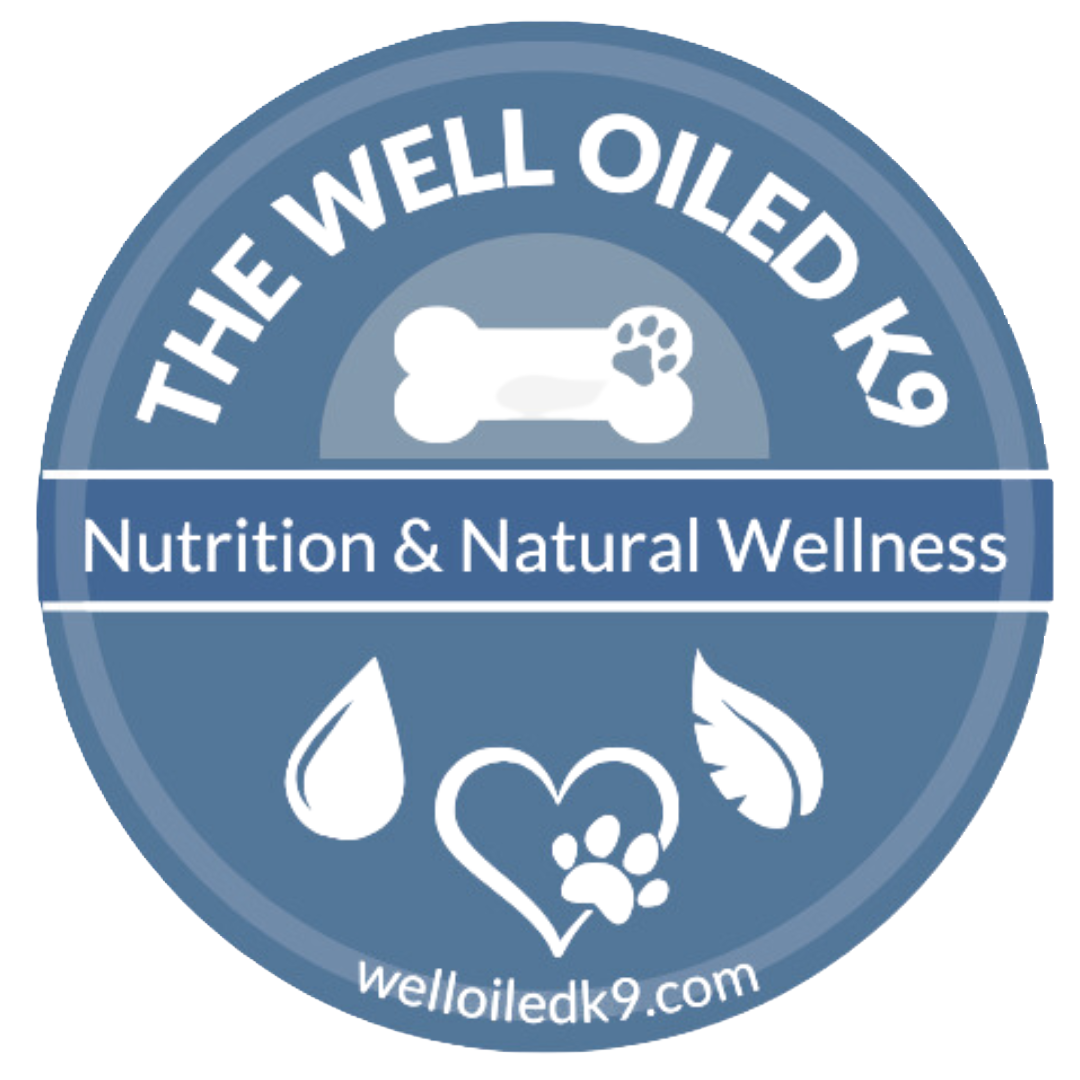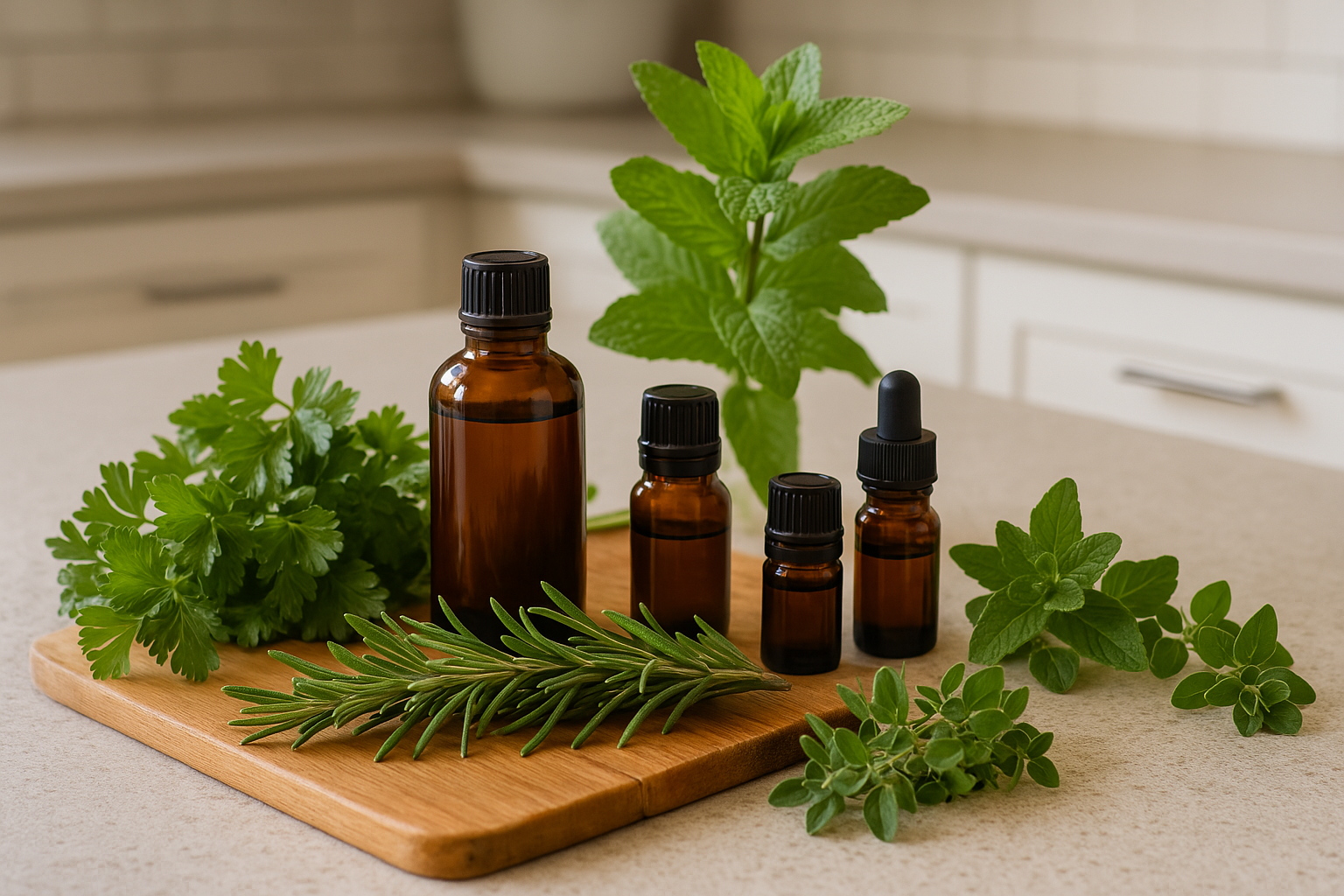Using Herbs & Essential Oils Together
Combining Herbs and Essential Oils Safely in Dogs
A Natural Wellness Bridge Between Two Powerful Tools
If you’re already using herbs for your dog—or exploring the benefits of essential oils—you might be wondering if you can combine the two. The short answer is yes... but like any wellness strategy, it’s important to understand how to do it safely and thoughtfully.
As both a certified herbalist and clinical aromatherapist for dogs, I often bridge these two healing systems in my protocols. When used together, herbs and essential oils can enhance each other's effects—offering layered support for the immune system, digestion, emotions, skin health, pain, and more.
But combining them without intention can lead to overdoing it, creating conflicting actions, or overwhelming your dog’s body with too much stimulus. So let’s walk through the why, when, and how to integrate these tools safely—and when it’s best to choose just one.
Why Combine Herbs and Essential Oils?
When used thoughtfully, this pairing can offer:
Multi-pathway support: Herbs work from the inside out, often through nutrition, detox, or long-term constitutional balance. Essential oils work from the outside in—interacting with the nervous system, skin, or olfactory system to trigger fast-acting responses.
Synergistic effects: Some herbs and oils share similar actions—like antimicrobial, calming, or anti-inflammatory properties—and combining them can amplify benefits.
Full body and mind care: Herbs are excellent for internal organ systems, while oils can support behavior, emotional wellness, and pain management. Together, they address the whole dog.
When to Combine Herbs and Essential Oils
Chronic Conditions
Long-term inflammation, allergies, arthritis, or immune dysfunction often benefit from a layered approach. Herbs can be the foundation, with essential oils supporting stress, detox pathways, or pain.Stress and Anxiety
Calming herbs like valerian, passionflower, or skullcap can work beautifully with oils like lavender or petitgrain for behavior support. Herbs nourish the nervous system, oils help ground your dog in the moment.Skin and Coat Issues
You might use internal herbs like nettle, burdock, or dandelion to support detox and reduce inflammation—while applying a diluted essential oil like German chamomile topically to soothe irritated skin.Digestive Imbalance
Herbs like slippery elm, marshmallow root, and fennel can support the gut lining and motility, while diffused oils like ginger or cardamom can help ease nausea or stress-related digestive upset.Pain and Mobility Support
Combine herbs like turmeric, boswellia, or devils claw internally with topical oils like helichrysum or copaiba to support inflammation and tissue recovery.
When Not to Combine Them
There are times when simpler is better. Here’s when I hold off on mixing:
Acute illness
When your dog is sick, vomiting, or highly stressed, focus on one modality at a time. Too many products can confuse the body or create adverse reactions.Sensitivity or detox signs
If your dog is experiencing detox symptoms like loose stool, skin eruptions, or fatigue after starting a new herbal blend, don’t add oils until things stabilize.Puppies, seniors, or fragile dogs
These dogs often need slower, gentler support. Introducing too many inputs at once can overwhelm their systems. Always go low and slow. One entry or change at a time.Overlapping actions
If both your herb and oil have strong liver stimulation, blood thinning, or sedative properties, you may be doubling up without realizing it. This is where guidance matters.
Start Slow: How to Combine Them Safely
Choose one lead modality.
Are you focusing on internal healing (herbs) or external/emotional support (oils)? Start with one, then consider integrating in the other once you see how your dog responds. You may find one modality is preferred over the other by your dog.Use gentle herbs and oils first.
Think calendula, chamomile, marshmallow root... or lavender, copaiba, frankincense. These are calming, nourishing, and unlikely to overstimulate.Match the energetics.
Both herbs and oils have energetics—warming, cooling, moistening, drying. If your dog runs hot, combining warming herbs and oils (like ginger + cinnamon bark) could be too much. Balance is key.Watch for signs of overload.
Lip licking, avoiding you, hiding, excessive panting, behavior changes, or digestive upset could all be signs you’re doing too much.Work with someone trained in both.
Combining oils and herbs isn’t just about picking your favorites. It takes understanding interactions, safety thresholds, and your dog’s constitution. That’s where I come in.
Herbs and Oils That Pair Well
While the full list is something I share in my forum (with blend ideas and specific uses), here are a few favorites that make a gentle and effective team:
Calendula (herb) + Lavender (EO): Skin healing, calming, gentle enough for long-term use
Dandelion (herb) + Helichrysum (EO): Liver support, tissue regeneration, antioxidant boost
Chamomile (herb and EO): Emotional balance, digestive calm, allergy support
Marshmallow Root (herb) + Frankincense (EO): Gut soothing and immune balance
Nettle (herb) + Copaiba (EO): Anti-inflammatory support for itchy skin or joint stiffness
Top 5 Things to Do When Combining Herbs and Essential Oils
Start with one internal (herb) and one external (oil) support at least 30 minutes apart from administration—don’t do it all at once
Observe your dog closely for signs of sensitivity or success
Use clean, high-quality oils and ethically sourced herbs
Choose gentle options first and match them to your dog’s needs (not just symptoms)
When in doubt, reach out—I’ll help you design a safe protocol tailored to your dog
Dana’s Thoughts
Combining herbs and essential oils is like tuning an orchestra—you want harmony, not noise. It’s one of the most rewarding ways I help pet parents get real results using natural tools. But it takes intention. Slow introduction, observant care, and respect for your dog’s individuality are non-negotiables.
If you're curious about how to combine them effectively for your dog’s specific health needs, I’ve created a client-only guide that dives deeper. We talk combinations, contraindications, energetic matching, and even sample formulas.
Join the forum to grab the full guide and get help building a custom plan: https://members.welloiledk9.com
Want to see what others are doing? Come hang out with us on Facebook: https://facebook.com/groups/wellfedk9
"Statements in this blog have not been evaluated by the FDA. Educational content only. Not intended to diagnose, treat, cure, or prevent any disease."

